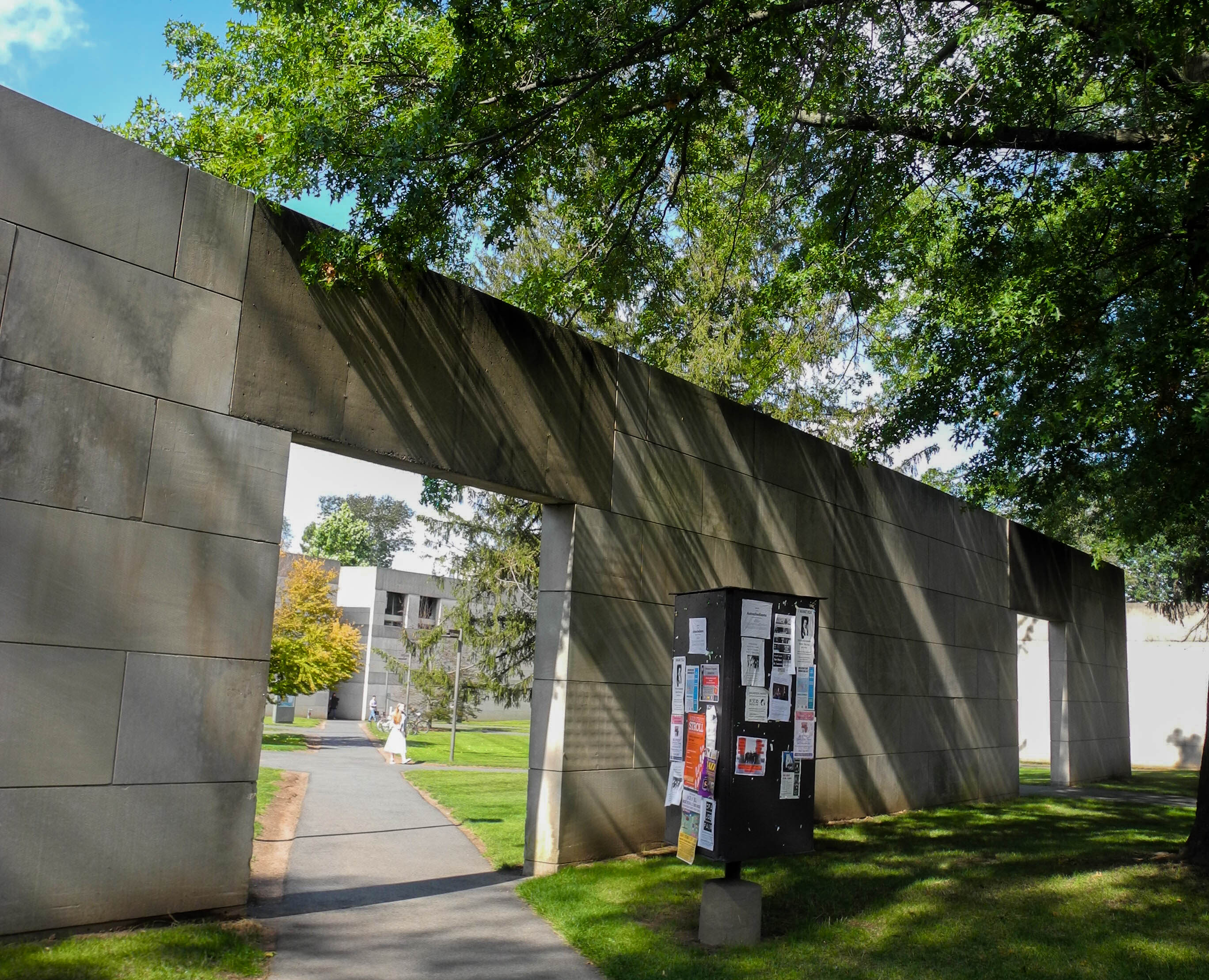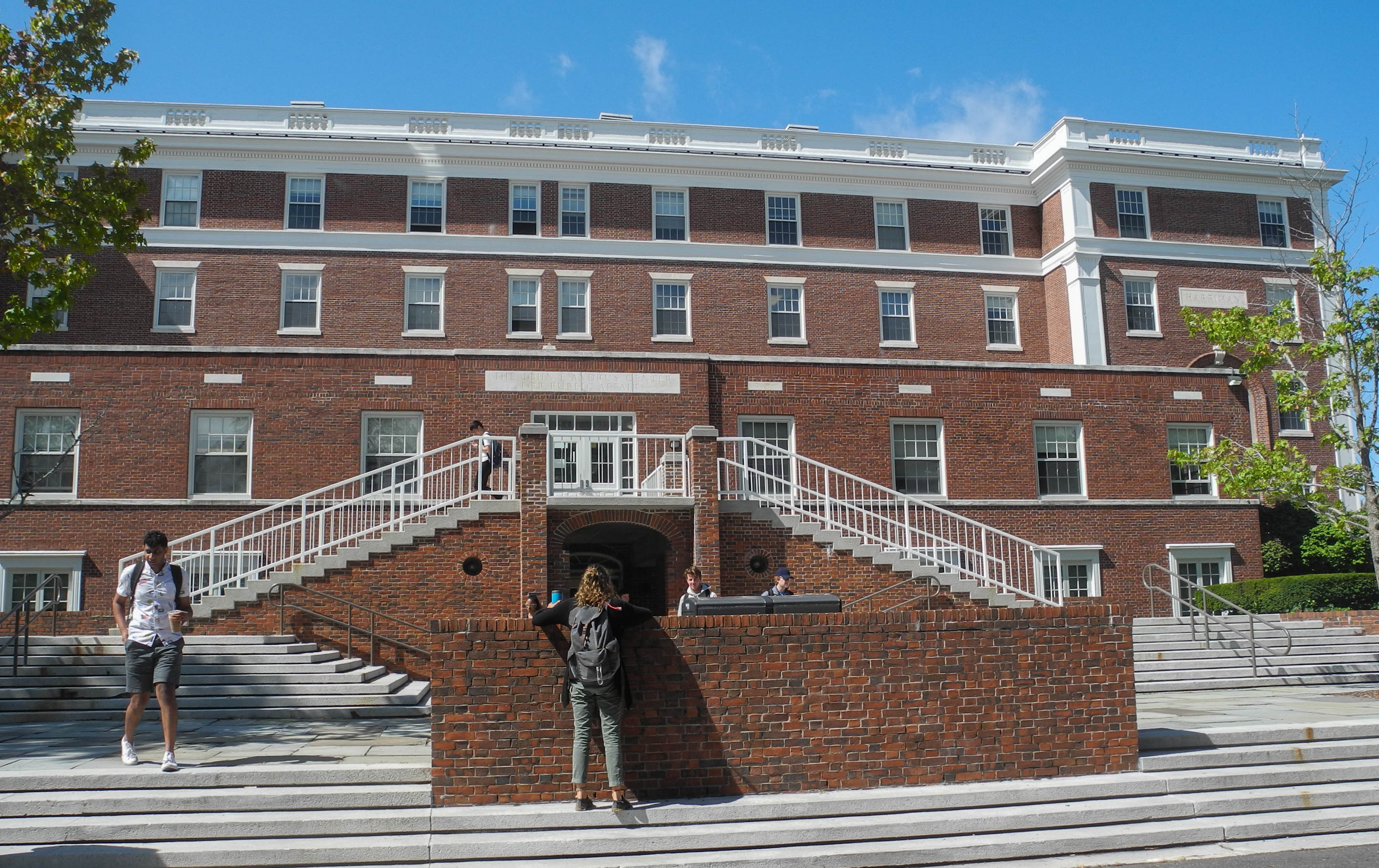
c/o Dani Smotrich-Barr, Photo Editor
In his “Welcome to the 2017-2018 Academic Year” email, President Roth announced a number of updates on the University. These included the appointment of Frank B. Weeks as Visiting Professor of Theater and Kathleen Conlin as the Theater Department Chair, the opening of the campus Resource Center, and the Albritton Center for the Study of Public Life’s work on a Civic Action Plan to guide the University’s relationship with Middletown. He also confirmed that the University is preparing for upcoming projects on major facilities.
“We have begun preparations for some major facilities projects, beginning with the Film Studies [building], the CFA [Center for the Arts] and the PAC [Public Affairs Center],” Roth wrote. “We are also starting long-range planning for a new science building,” Roth wrote.
These projects are part of a 10-to-15 year response to a 2015 report by design and consulting firms Sasaki Associates, Inc. and Eastley & Partners, which established five principles for campus development. The proposed changes to the Film Studies building, the CFA, and the PAC rose to the top of a list of projects designed around these principles. Director of Physical Plant Alan Rubacha shed light on the status of each of these projects.
“JCJ Architects from Hartford, Connecticut were commissioned in 2016 to complete a space-planning analysis and conceptual design [of the Film Studies building],” Rubacha said. “Based on the results of the latest planning, programming, and conceptual design efforts, JCJ Architects has recently been commissioned to complete the first step of design for a new building addition…. The purpose of this effort is to yield a final layout, design concept, and total project budget that will be the basis to complete the design and construction once Wesleyan has raised the funds to complete the project.”
Rubacha shared that this first step will be completed in the spring of 2018. He also provided information on plans to renovate the PAC.
“For more than two years, we have been considering a renovation to the Public Affairs Center,” he said. “Guided by the campus planning principles, our office … considered many permutations of renovation and addition, each focused on improving the classroom experience, facilitating the interaction between students, faculty, and staff that forms the basis of the Public Affairs Center, and reducing or eliminating deferred maintenance.”
Since the PAC is one of the most-used buildings on campus, renovating the building is a top priority of the University. However, just as with the Film Studies building, the University had to first evaluate the existing structure before beginning to plan any renovations or additions.
“We engaged Newman Architects of New Haven, Connecticut (the Boger Hall architects) to help us through a facility conditions assessment and a very broad conceptual design,” Rubacha said. “The facility condition assessment engages professionals in several disciplines, such as roofing, envelopes, structures, code, etc. to analyze the building and describe work that is required to preserve the asset, such as replacing the roof, and can describe what intervention to the building is feasible, such as removing walls, etc. This is a critical first step to help inform any future planning.”
Architects can now decide what changes they can make to the PAC’s existing classroom and office space.
“We will look at permutations of office, classroom, and common space design that fit many different models and some that are completely revolutionary. This process is only conceptual at this point, as we [try to] understand the capabilities of the building and how the building impacts the center of campus including its connections to Olin, Judd, Allbritton, and Andrus Field.”

c/o Dani Smotrich-Barr, Photo Editor
The University hopes to have a set of plan concepts later this fall and a total project cost estimate in the spring. The CFA project mentioned in Roth’s email involves moving classroom space to the basement of Olin.
“The CFA project consists of moving the print collection storage and classroom functions from the Davison Art Center to the Olin Memorial Library Microforms room,” Rubacha said. “Wesleyan [has] engaged Newman Architects to understand our storage and classroom requirements and then program, plan, and design the space in the Olin Memorial Library. We are only now just entering the conceptual design and estimating phase of this project, having just completed the investigation of the collections and interviews with our curators.”
As with the other two projects, the University hopes to have a design and cost estimate by the spring. Rubacha confirmed Roth’s statement about a new science center being in the works, but he stressed the “long-range” nature of the project.
“Planning for a science building is going to begin with a thorough understanding of the space utilization and projected program growth in Exley, Science Library, Hall-Atwater, and Shanklin,” Rubacha said. “At this point, we are in the earliest stages of discussion internally regarding existing space utilization…. We are many months away from beginning a planning process in earnest.”
Rubacha also stressed that these facilities projects depend on the University’s future fundraising efforts. The new fundraising campaign that Roth mentioned in his email will be crucial to the progression of these projects. Vice President of University Relations Barbara-Jan Wilson commented on the University’s plans to begin a new campaign but made clear that the campaign is still in its preliminary stages.
“We are just beginning the planning for the next campaign,” Wilson said. “Priorities are still being discussed. I know financial aid will remain a priority. And gifts to the Wesleyan Fund, of course (our goal is to raise $10-12 million unrestricted every year—much of it for financial aid). And there will be some facilities projects—although these are still very much in the early stage of discussion.”
Wilson also highlighted the success of the THIS IS WHY campaign, which raised $482 million in 2016, and commented on how this massive effort will inform the University’s future fundraising efforts.
“We want to find better and more meaningful ways to engage our younger donors, those who have recently graduated from Wesleyan,” she said. “These donors are the future of Wesleyan. We will continue to use reunions and planned gifts as vehicles for giving.”
Wilson expressed optimism about the new campaign, even though it is in its early stages.
“We will hope to do more in the next one, but it is too early to say much more.”
William Halliday can be reached at whalliday@wesleyan.edu